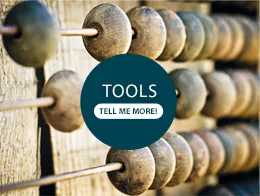By the age of 12, Claudine Humure had overcome more struggle than most of us face in a lifetime. Born in Rwanda in 1992, Humure and her siblings lost their parents to that country’s genocide in 1998. Seven years later, Humure was diagnosed with cancer in her right leg and was forced to undergo amputation of her right leg above the knee before it spread throughout her body.
“I didn’t even understand what they meant when they said the cancer is spreading,” Humure, now 24, tells We See Genius. “It just sounded scary when they said if you keep your leg, you will die.”
Humure chose life. And the life she chose to live has been one of action — and finding solutions for those in similar life-altering straits.
A MEDICAL CONUNDRUM
“Before cancer,” Humure recalls, “I had a pretty happy childhood. No different from any other kid. I played soccer a lot.” Humure played on a team at the Imbabazi Orphanage in Gisenyi, a town of more than 100,000 bordered by Lake Kivu to the south and the Democratic Republic of the Congo to the west. But when she was 12, Humure was hit in the knee with a ball during a game — and, strangely, the impact caused significant pain. Instead of continuing on like most 12-year-olds, she had to wait the game. Soon she found walking painful. The orphanage physician suggested Humure go to the local Hospital of Gisenyi, where doctors were equally stumped. X-rays were blurred. Soon Humure couldn’t straighten her leg at the knee. And all the while, she continued to grow sicker.
“At the hospital we went to, there was no doctor who knew how to diagnose cancer,” Humure remembers. “They tried everything but they didn’t know what was going on. Every medicine they tried didn’t work.”
It was 2005, and in Rwandan hospitals, as in other developing countries, cancer detection and treatment were still in their infancy. For most in the east-central African nation, the reality was that even with medical intervention a host of cancers could go undetected until becoming fatal. Even as recently as 2014, the World Health Organization found more than two-thirds of cancer deaths worldwide were in low- and middle-income countries. Often times, cancer would never be diagnosed — and if it was, it was essentially a death sentence. “In 2005 in Rwanda, they didn’t really have treatments for cancer,” Humure says.
After a week in the Hospital of Gisenyi, doctors sent Humure to the main hospital in Rwanda’s capital, Kigali. There, doctors performed surgery on Humure’s leg and sent her back to the orphanage. Three weeks later, after Humure had spent the majority of that time bed-ridden with an illness, the orphanage sent her to a different hospital in the Congo.

Claudine Humure. Courtesy photo
TIMELY VISIT FROM PARTNERS IN HEALTH
Around this time Boston-based nonprofit Partners In Health was beginning its initial work with the Rwandan government. Co-founded in 1987 by Boston-based physician Dr. Paul Farmer and a team of three others, Partners in Health is widely known as one of the most significant and important organizations addressing social justice and medical conundrums in some of the most desperate places in the world. Farmer is the subject of the 2003 New York Times bestseller Mountains Beyond Mountains, in which he is described by author Tracy Kidder as “a man who could cure the world.”
Partners in Health began with Farmer’s work in Cange, Haiti, a rural town in the island’s rugged central plateau that had been overwhelmed with infectious diseases. By 2005, the 501(c)3 organization was beginning to set up shop in Kigali, working closely with the Rwandan government.
Though most historical sources claim the Rwandan genocide lasted 100 days from April to July 1994, Humure says that wasn’t necessarily the case. Her father was shot and killed on his way to work and her mother passed soon after in the hospital from an illness. Both happened in 1998. War continued to rage in neighboring Congo until 2003. And Rwanda was still incredibly underdeveloped, poor, and reeling from the genocide. In 2005, fewer than 5% of the country’s households had electricity. The average amount of time it took to reach a water source was just under half an hour. Fewer than 10% of women made it past primary school. According to the 2005 Rwanda Demographic and Health Survey, conducted and published by the Rwandan government, nearly half (45%) of children under 5 years old were malnourished. Nearly a third (29%) of children under 18 were classified as “orphans or vulnerable children.” To this day, almost half of the country’s population lives below the national poverty line.
The first Partners in Health representatives stepped foot on Rwandan soil in 2005. In an orphanage in Gisenyi they bumped into a sick 12-year-old girl. “They were just visiting the country and they happened to visit the orphanage,” Humure says. “And they found me there.” Without any adequate diagnostic tools of their own, Partners in Health first thought Humure had tuberculosis — which was, and still is, relatively common in Rwanda. Humure remembers that they asked her lots of questions, took many tests, and then she left for the hospital in Congo.
CHOOSING BETWEEN LIFE AND LOSING A LIMB
The Congolese doctors surmised that Humure had a fractured leg. They even put a cast on the leg, which she describes as the most painful experience of her life. Wearing the new cast, Humure was sent back to Gisenyi for the first day of sixth grade.
Except she was so ill, she had to go home to the orphanage early. A few weeks later, Partners in Health doctors came back and delivered the toughest news of Humure’s young life. “They spoke some language to me. It could have been French or English. That was before I spoke English or French,” she begins. “And they came and told me, ‘You have cancer and there’s nothing you can do about it besides amputate your leg.'”
Humure was diagnosed with osteosarcoma, a bone cancer that mainly afflicts children, in her right tibia. She would have to have the majority of her right leg amputated. Even with such a dramatic effort, the cancer had already moved to her lungs and Humure would need to run the gamut of cancer treatments — which were nearly impossible to get in Rwanda, where cancer was basically synonymous with a death sentence.
“Many patients passed away because there was no one who could treat them,” Humure says of cancer patients in Rwanda at the time. “When I found out I had cancer, I thought my fate was death because I had never heard of anyone who had survived cancer.”
BEATING BACK CANCER AND BESTING SCHOOL’S CHALLENGES
After the amputation, Humure was flown to Massachusetts General Hospital for Children in Boston. For the next 11 months, she underwent chemotherapy, had two more “cancerous nodules” removed from her lungs, and underwent surgery to prepare her leg for a prosthetic limb. It was the last ordeal that opened up a unique path. “Life was easier for me compared to other amputees in Rwanda,” says Humure, who returned to Rwanda in 2006 with her cancer in remission. “I lived a privileged life with a prosthesis.” She discovered that infrastructure for the disabled in her native country was virtually nonexistent. Most amputees, she noted, were either on crutches or had no help at all.
Right away, lightbulbs began to flicker in her brain. “If we could bring prosthetics back to Rwanda, the country would improve,” she says of her thoughts as a 13-year-old cancer survivor. “People’s lives would improve. They would be much happier.”
With that mindset, Humure began to excel in school. While in Boston, she had learned English, so when she returned to Rwanda she switched from a French-speaking school to an English one. Then, at the suggestion of a friend, she decided to begin applying to U.S. high schools. Lesley King, a former managing director and current Partners in Health board member, knew Humure and heard she was applying to schools in the U.S., and she decided to help. Less than five years after returning from the U.S., Humure was on her way back — this time to attend Greenwich High School in Greenwich, Connecticut. Humure continued to thrive. After a year at Greenwich, Humure applied to and received a full scholarship to attend Dana Hall, an elite all-girls boarding school in Wellesley, Massachusetts.
All the while, Humure continued her mission to bring prosthetics to Rwanda and other underdeveloped nations. She spent her three years as a U.S. high school student speaking at healthcare conferences, Harvard Medical School, and Partners in Health’s Butaro Hospital in Rwanda. Humure dedicated her final high school project to understanding the design and creation of prosthetic limbs. In the summer of 2013, between graduating from Dana Hall and enrolling at Wheaton College in Norton, Massachusetts, she interned at Next Step Bionics & Prosthetics in Newton, Massachusetts. “When I started college, I knew I wanted to do something with prosthetic limbs,” Humure says.
USING 3D PRINTING TO ACHIEVE PROSTHETIC SOCKET IMPROVEMENTS

A computer graphic design of Humure’s socket. Photo courtesy of Autodesk
At Wheaton, where she is majoring in biology and minoring in business management and from which she will graduate in 2017, Humure has indeed dedicated herself to learning about prosthetics — and designing better ones. She spent summers volunteering at rehabilitation hospitals and summer camps. At Spaulding Rehabilitation Hospital in Boston, she worked with some of the Boston Marathon bombing victims. She bounced back and forth between Rwanda and Massachusetts, giving speeches and dabbling in documentary filmmaking. Her LinkedIn profile is a mosaic of complex research projects, writing, and filmmaking efforts, as well as a mountain of volunteer work. Her C.V. looks like it could belong to a rising managing director at some Bay Area medical technology startup, rather than a college senior.
In the summer of 2015, Humure secured a biomechatronics research internship at MIT’s Media Lab. During that internship, she was introduced to Autodesk software and the potential of 3D printing and engineering for advanced prostheses. Working alongside MIT graduate and undergraduate students, Humure designed an adjustable socket on a prosthetic limb for a transfemoral amputee using Fusion 360, a design software produced by Autodesk. When the summer ended, Humure wanted to continue to develop the product, so instead of working with Fusion 360 in a university lab she decided to go straight to the source and intern at Autodesk.
Autodesk was founded in the San Francisco Bay Area in 1982 by computer programmer John Walker. By 1986, the $59,000 collectively pooled by Walker and 12 programmers to start the company was producing more than $40 million in sales annually and supporting Autodesk’s more than 250 employees. Now, more than 30 years later, after acquiring dozens of firms along the way, the publicly traded company employs nearly 10,000 in the U.S. and Canada and is valued at just under $5 billion. While the name Autodesk might be unknown to many, what comes from its suite of computer applications and programs certainly isn’t. Autodesk-generated software has played a role in everything from Tesla’s electric cars to the design and construction of New York City’s Freedom Tower to graphics in the Harry Potter movies.
‘MY HOPE IS THAT POOR PEOPLE HAVE ACCESS TO IT AND GAIN THEIR INDEPENDENCE’
Now Humure is using Autodesk to bring more comfortable prosthetic limbs to the developing world. “A socket is considered the most important piece of a prosthesis, because if it doesn’t feel comfortable, then the amputee will not be able to use the rest of the prosthesis,” she explains. Even the most expensive and technologically advanced prosthetic limbs can create more pain than aid if the socket isn’t properly fitted or if it is built in a way that will make it uncomfortable. “It’s the first point of contact,” Humure says of the sockets.
Using technology for social good is a burgeoning and interesting area, especially in the healthcare and medical devices industry. London-based Andiamo is using 3D printing technology to create affordable orthotics for children and has grown to just under 100 employees since being founded in 2013. United Kingdom-based Open Bionics has used 3D printing to produce robotic hands for amputees for £1,000 (about $1,342) — a huge improvement on the £3,000 (about $4,028) to £60,000 ($80,568) they can cost through conventional manufacturers. ReWalk Robotics, a 15-year-old Berlin-based tech company, is using a robotics system to help people who have never walked do just that. The company went public in 2014 after raising more than $18 million in venture capital backing.
These examples and more give Claudine Humure hope for realizing her plan to bring affordable and well-fitting prosthetic sockets to the developing world. “My hope is that this prosthetic socket is designed for amputees in developing countries,” she says. “Amputees that don’t have access to these high-end prosthetic limbs (which are made) for people with access to insurance and money. Like families that make less than $300 a year in Rwanda. My hope is that poor people have access to it and gain their independence.”



